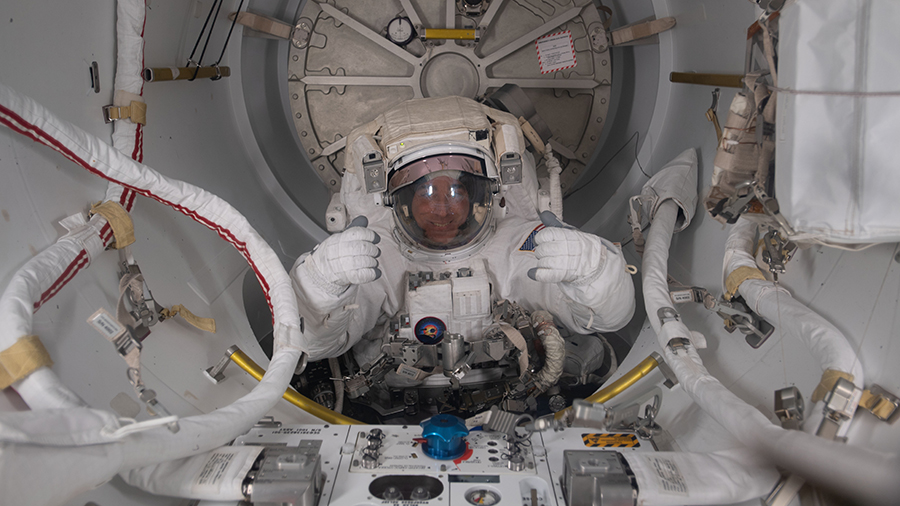Emergency Training, Eye Checks Ahead of Spacewalks

The International Space Station was a hive of activity today with the Expedition 63 crew practicing emergency skills, examining eyes and studying water conservation. Two astronauts also will continue more battery swaps in a pair of spacewalks set to begin next week.
Living 260 miles above the Earth and orbiting the planet 16 times a day presents a unique set of risks that space residents must be prepared for. Today, NASA Commander Chris Cassidy joined Roscosmos Flight Engineers Anatoly Ivanishin and Ivan Vagner for a simulated emergency evacuation of the station. The trio spent the afternoon practicing quickly entering their Soyuz MS-16 crew ship for a rapid undocking and Earth re-entry.
Afterward, Cassidy partnered up with his fellow NASA astronauts Doug Hurley and Bob Behnken for eye exams at the end of the day. Hurley led the effort as the Crew Medical Officer and used optical coherence tomography gear to scan the retinas of his two crewmates.
Behnken and Cassidy are set to go out on two more spacewalks scheduled for July 16 and 21. The duo will continue replacing aging nickel-hydrogen batteries with new lithium-ion batteries on the starboard portion of the station’s truss structure. The batteries store and release power collected from the orbiting lab’s main solar arrays.
Robotics controllers overnight commanded the Canadarm2 robotic arm to replace a failed remote power control module (RPCM) on the port truss segment. The replacement restores redundancy to the solar alpha rotary joint after the old RPCM failed last week.
In the Russian side of the station, Vagner primarily worked on housekeeping chores as he checked water tanks and cleaned air filters. Ivanishin spent some time photographing the effects of Earth catastrophes and exploring how international crews and ground controllers communicate with each other.


























